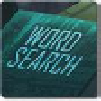Game Development Reference
In-Depth Information
HOW MICROPHONES WORK
Cardioid,
also called a
unidirectional
microphone pattern, is sensitive to sounds from only one
direction. The pattern of a cardioid mic extends to the left and right about 180 degrees so if the sound
source is directly behind the microphone it will not be detected very much at all. This pattern is desirable
in voice-over work as it focuses on things that are directly in front of it, such as the actor's voice, and
ignores other sounds that might be of mic in the room.
Omnidirectional
This pattern is generally considered to be a perfect sphere. Unlike cardioid, this
pattern can be considered the “purest” in terms of low coloration. It also responds much less to wind
noise than directional mic patterns. This is not a great mic pattern to use in most cases, however, as it
will pick up everything around it, including the acoustics of the room, which in most cases is NOT what
you want.
STUDIO RECORDING SESSION OVERVIEW
Regardless of the microphone type used, the studio engineer will most likely be recording your session to
some kind of digital medium and it will end up as a digital audio i le. Pro Tools is a very common program
used in studios for voice work, but there are other similar DAWs as well. Which one they are using may
make a dif erence when it comes to delivering the raw audio i les to an editor so it is always good to ask
in advance what program they use for recording and coordinate with your editor so they know ahead of
time if they can open the i les the studio will send them.
As a general rule, most voice-over sessions are recorded at a bit rate of 16 or 24 bits and at a sample
rate of either 48 or 44.1Kbps. Again to be safe, you should make sure to discuss this with the recording
engineer beforehand, so you can know what they are doing and make sure that your editor will have no
problem working on the i les once they leave the studio.
Preparing the Space for Recording
To get the best recording quality for game voice-over, you want a
clean and robust signal to start with, because it's very important—
even more important than i lm or TV—to get a very clean recording
that is free of extraneous background noise or any distortion.
Remember, any noise that is introduced into the system from the
start will tend to stay throughout the recording and editing process.
Getting a good clean recording from the beginning is the best way to
go. When voice-over i les are compressed, noise can become louder
and make the i les sound bad to the ear. In some cases, if the voice-
over is not recorded well enough you might have to re-record, which is
dei nitely bad news and can cost a lot of money. Back in the day, when
most audio was down-sampled and converted to 8-bit i les, getting a
Test your knowledge
of
all things voice
by
going over to the App.
Head on over to the
Classroom, and click
on the Word Search
book!



































